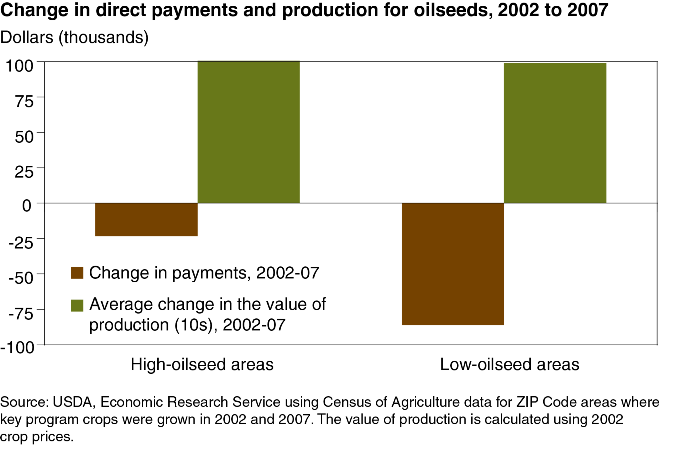Introduction of direct payments for oilseeds did not impact production decisions
- by Economic Research Service
- 11/8/2012

Direct payments are based on historic acreage and yields of program crops like corn and wheat and are often considered "decoupled" because they do not depend on a farmer's current production decisions. Nonetheless, because direct payments are linked to past production of program crops and because productive areas tend to remain productive over time, areas that currently have higher average yields and more acreage of program crops tend to receive more payments than areas with lower yields and fewer acres. This positive association between direct payments and production of program crops raises doubts about whether direct payments really are decoupled from current production decisions. The 2002 Farm Act authorized direct payments for the first time for oilseed crops, such as soybeans, triggering a sudden shift in direct payments toward areas with higher average production of oilseeds. By studying oilseed producers' response to the shift in payments between 2002 and 2007, ERS researchers found that direct payments had little effect on production decisions This chart appears in "Expansion in Direct Payments Did Not Lead to More Crop Production" in the September 2012 issue of ERS's Amber Waves magazine.

